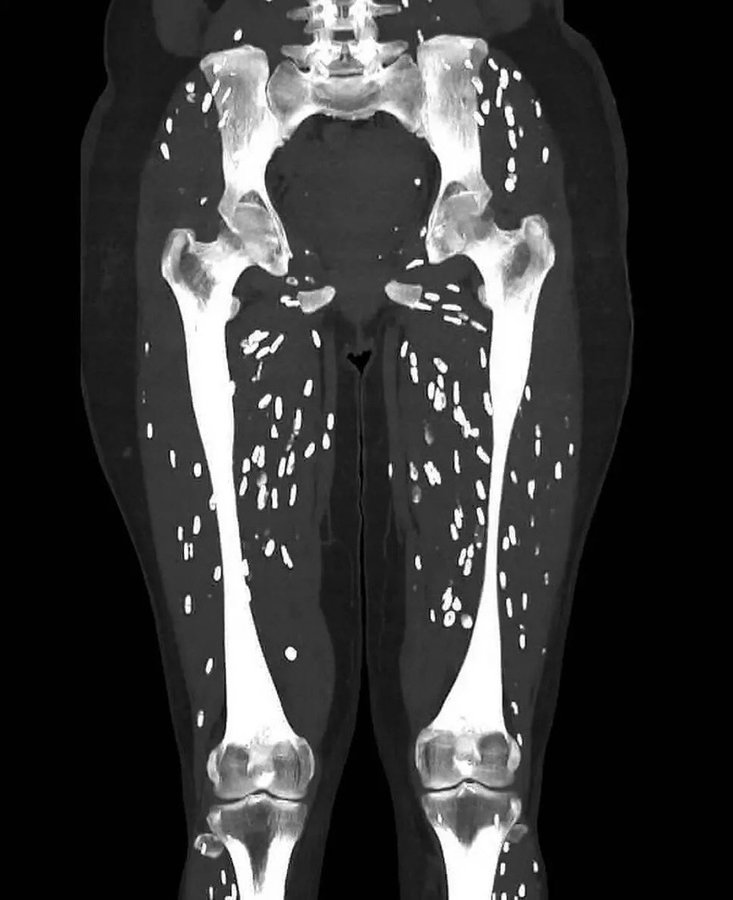Just a quick reminder that you might want to give that pork chop a few more minutes on the grill.
After sharing a disturbing scan image of a woman’s legs on social media, a doctor urged his followers to speculate on what the disease might be.
Sam Ghali, M.D., a physician with over 630,000 followers on X, shared this photograph of a female patient’s legs, describing it as “one of the craziest CT scans he’s ever seen.”
However, white blotches were apparent across the scan image, which concerned some followers.
After giving people 24 hours to guess what the answer might be, Dr. Ghali revealed that the patient in question had Cysticercosis, which he described as a “infamous parasitic infection caused by ingestion of larval cysts of Taenia solium, also known as: pork tapeworm.”
According to the National Organisation for Rare Disorders, cysticercosis is caused by ingestion of the swine tapeworm’s eggs through fecal-oral contamination and results in the development of cysts throughout the body, although not in the digestive tract.
In a follow-up tweet, Dr. Ghali clarified that “after the eggs are ingested (humans or pigs), they release larvae, which penetrate the intestinal wall and invade the bloodstream (via mesenteric venules), and from there can spread literally anywhere in the entire body.”
Dr. Ghali identifies the “brain, eyes, subcutaneous tissues, and skeletal muscles” as the body’s most prevalent locations.
The larvae produce cysticerci wherever they settle.
The tweet’s scan depicts the body’s typical inflammatory response to cysticerci, which leads to their death and calcification—a condition known as “rice grain calcifications” due to their appearance.
Dr. Ghali’s next words are terrifying: “What can be very bad is when the larvae wind up travelling up to the brain and forming cysts in actual brain tissue. This particular condition is referred to as neurocysticercosis. It can cause headaches, disorientation, seizures, and other severe neurological issues.”
The NORD further states that the illness “can affect anyone at any age and affects males and females in equal numbers.”
According to the organisation, patients with cysticercosis usually have no symptoms and do not need treatment. For those who do, there are medications available.
The World Health Organisation adds that neurocysticercosis (NCC) can cause epileptic seizures. According to WHO, Taenia solium is responsible for “30% of epilepsy cases in many endemic areas where people and roaming pigs live in close proximity.”
Plus, “in high-risk communities, it can be associated with as many as 70% of epilepsy cases.”
“The treatment for cysticercosis of the neurological system (neurocysticercosis) includes antiparasitic treatments, corticosteroids, antiepileptic medicines, and/or surgery. “Treatment is always tailored to each patient,” NORD adds.
Dr. Ghali’s final admonition to his followers reads: “So the moral of the story here is do your best to keep clean, always wash your hands, and never, ever eat raw or undercooked pork.”
Perhaps I’m simply staying away from it totally.
After reading this text you can also read about: Burning Scented Candles Increases The Risk Of Unpleasant Health Problems




